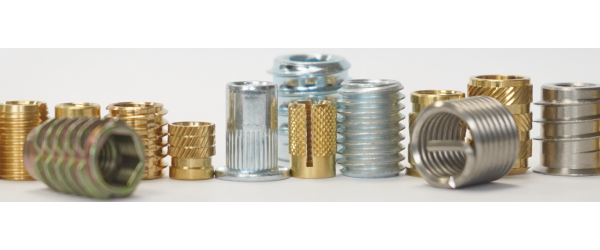Threaded inserts are an essential component for creating strong, reliable connections in woodwork projects. Whether you’re working with solid hardwood, softwood, or MDF, metal inserts provide durable threads that withstand wear and tear, making them ideal for furniture, cabinetry, and other wood applications that require frequent assembly or adjustments.
However, selecting the right type of threaded insert in the right material is crucial to ensure optimal performance, especially when considering the unique properties of different wood types.Why Use Threaded Inserts?
Threaded inserts are designed to replace traditional wood screws, which can weaken the wood over time due to repeated use or heavy loads. By distributing force more evenly, threaded inserts minimise the risk of stripping or splitting the material. They also allow for the use of machine screws, which are stronger and more precise than wood screws, enhancing the overall quality of your project.Types of Threaded Inserts for Wood
There are two primary types of threaded inserts for wood applications: screw-in inserts and press-in inserts. Screw-in inserts feature external threads that bite into the wood, providing a firm grip. These are ideal for hardwoods and softwoods. Press-in inserts, on the other hand, have knurled exteriors and are typically installed by pressing or hammering them into pre-drilled holes. These are often used in MDF or plywood, where the compressed fibres provide a strong hold.The Impact of Wood Acidity
When selecting metal threaded inserts, it’s important to consider the acidity of the wood. Certain woods, such as oak and cedar, contain high levels of tannins, making them naturally acidic. Over time, this acidity can corrode inserts made from less resistant metals, such as plain steel. For projects involving acidic woods, it’s advisable to use brass or stainless steel inserts. These materials are highly resistant to corrosion and can maintain their reliability even in challenging environments. Zinc-plated inserts are another option, offering a balance of affordability and corrosion resistance for less demanding applications.
In contrast, woods with lower acidity, such as pine or MDF, pose less of a risk to metal inserts. The primary concern here is how to deal with the material’s mechanical properties, its density and strength, making it susceptible to splitting or stripping. Threaded inserts solve this problem by distributing forces more evenly and ensuring a secure hold.Installation Tips
Proper installation is key to maximising the performance of threaded inserts. Begin by drilling a hole that matches the thread size for your insert. For screw-in inserts, use a screwdriver or installation tool to drive the insert into the wood. Avoid overtightening, as this can damage the threads or the wood. For press-in inserts, gently push them in by hand or tap them into place with a rubber mallet, ensuring they are seated flush with the surface.
Using threaded inserts also opens up possibilities for adjustments and repairs. If a part of your project needs to be taken apart or modified, using threaded inserts ensures the wood remains intact, maintaining the overall durability and appearance.Summary
Metal threaded inserts are an essential tool for creating durable, high-quality connections in a variety of woodworking projects. By understanding the unique properties of different wood types and selecting the appropriate material of the insert, you can ensure your work stands the test of time. Whether you’re crafting fine furniture or assembling modular components, threaded inserts provide the strength and flexibility you need to ensure strong, long-lasting connections tailored to your wood's specific characteristics. Happy woodworking!SHOP OUR RANGE OF INSERTS FOR WOOD

